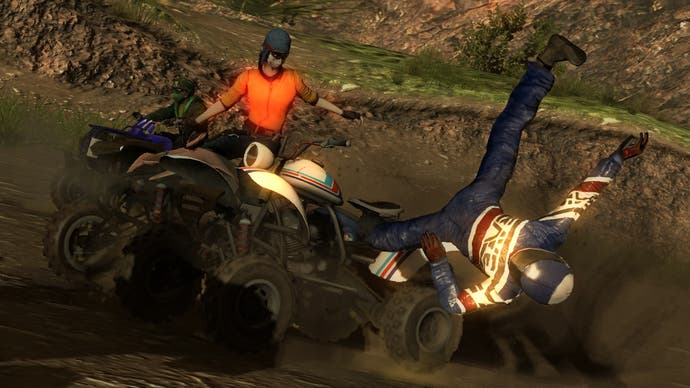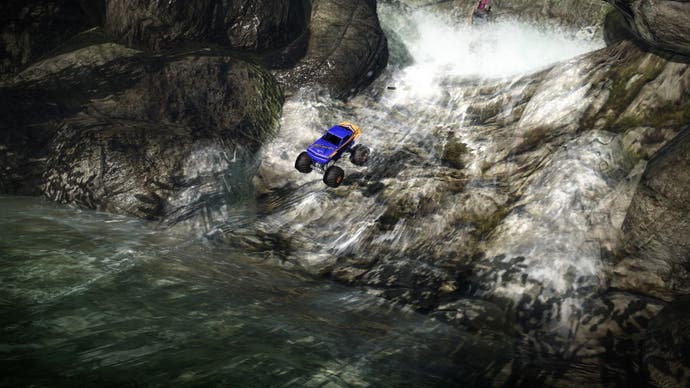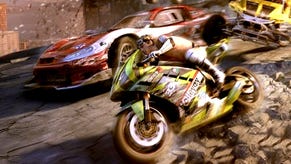MotorStorm: Pacific Rift
Truckulent.
Given Evolution's strong and oft-overlooked history developing rally games, it was no surprise when MotorStorm skidded into view on a slick foundation of variable surfaces; specifically, surfaces that remembered your path through them, bearing the scars to those who followed. But it was a surprise that it wracked up so much debt to the likes of SSX.
The relationship between the two seemingly disparate series isn't so hard to fathom, though. Throughout the original game's half-dozen tracks, there was a feeling of carving your vehicle through mud-slicks and rubble like a snowboard digging into the powder, and desperately boosting and wrenching the analogue stick in hope of grinding enough of the world beneath your wheels to stay on course. Track position - most often the path of optimal grip - was a resource fiercely guarded and easily lost.
Much as we liked the effect though, leaving ruts in the mud was probably a bit inconsequential as you drove through boneyards at 90mph. Playing an 80 per cent-complete version of Pacific Rift, you suspect the devs felt the same. With the reduced focus on terrain deformation, the grip thing now has a new and more important playmate: potent secondary routes. More than just a winning high road and losing mud-slick below, the alternatives here benefit from increased boost-cooldown from water pools and other options to test and then reward accomplished players. It's no longer about whether you're good enough to hold the high road; it's whether you're good enough to make the most of the road you're on.

You still use boost constantly, waiting impatiently for it to cool off or timing peak usage to coincide with huge jumps, so that you can let go as you soar through the air, or to end just before a section you can't help but slow for, but the introduction of water pools to cool your vehicle is impactful and when done right, as Oli pointed out last month, it's an object lesson in track design. Tracks also do well juggling MotorStorm's many vehicle types, with thoughtful ramps and jumps, each of which has differing implications for the cast of bikes, trucks, buggies, ATVs, and now of course monster trucks.
Cascade Falls, which we've played in every build so far, also improves on every lap. Its deep-water ponds with marked out shallows, barricaded shortcuts with mouse-hole entry points and layers of foliage present new challenges, backed up by more traditional obstacles: narrow high and low bridges and ramps to potentially switch low to high, tightening corners on mushy surfaces to punish overzealous boosters, and a final wide, banking half-pipe corner to reward those who've kept a bit in the tank. There are also hot-air balloons in the background, of which we approve, obviously.

Cascade Falls is one of the Water tracks, but there are also Air and Earth alternatives and of course Fire, which we hadn't seen before. When we do, the Wildfire circuit immediately threatens to disrupt the game balance with semi-molten magma piles strewn across its smoky, volcanic terrain, which prove fatal on contact, but in practice they're only damaging when you short a jump and end up going for a boiling swim, sinking (rather unconvincingly) into the surface texture and, more importantly, having to reset to track and losing vital seconds.









